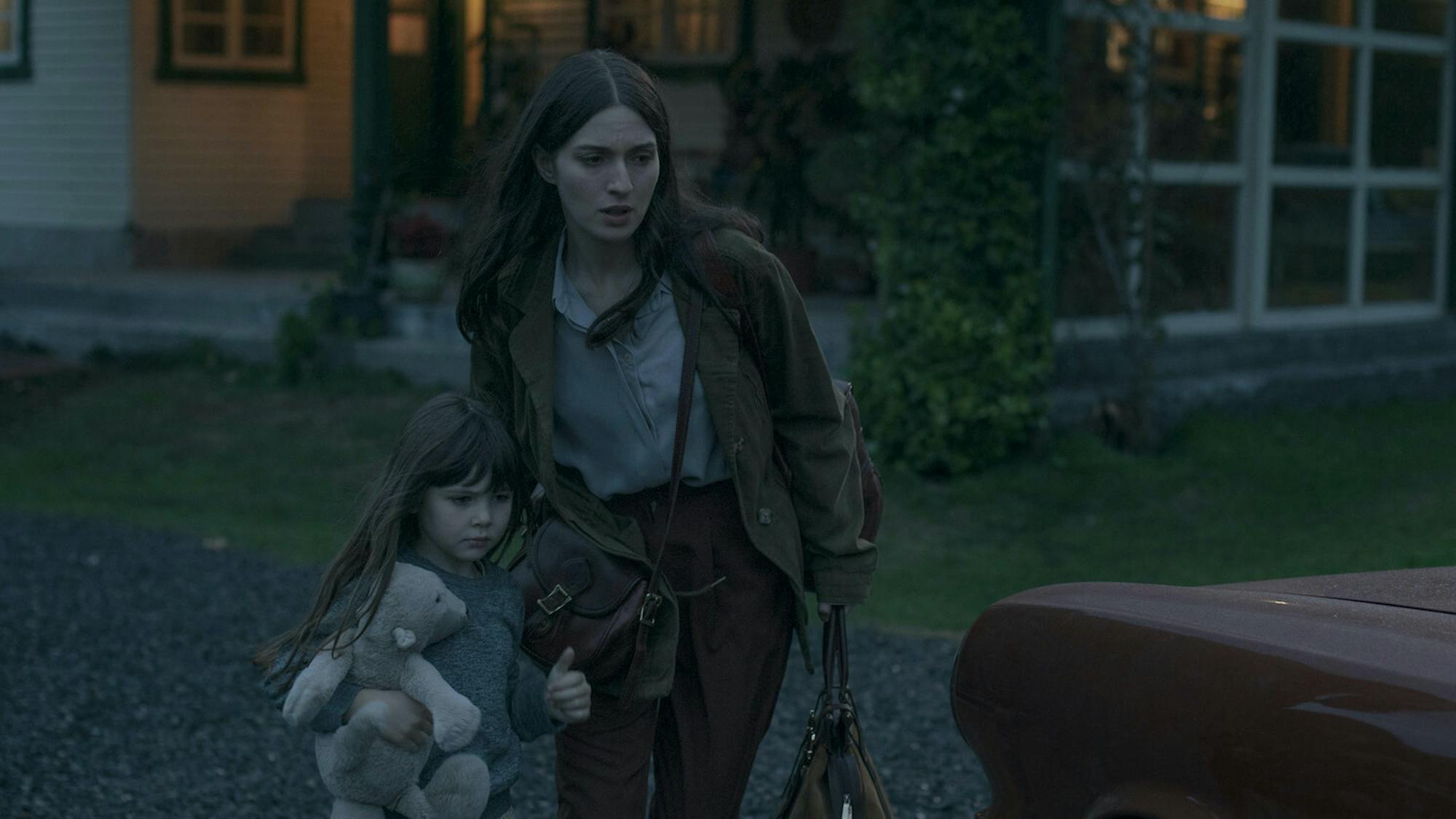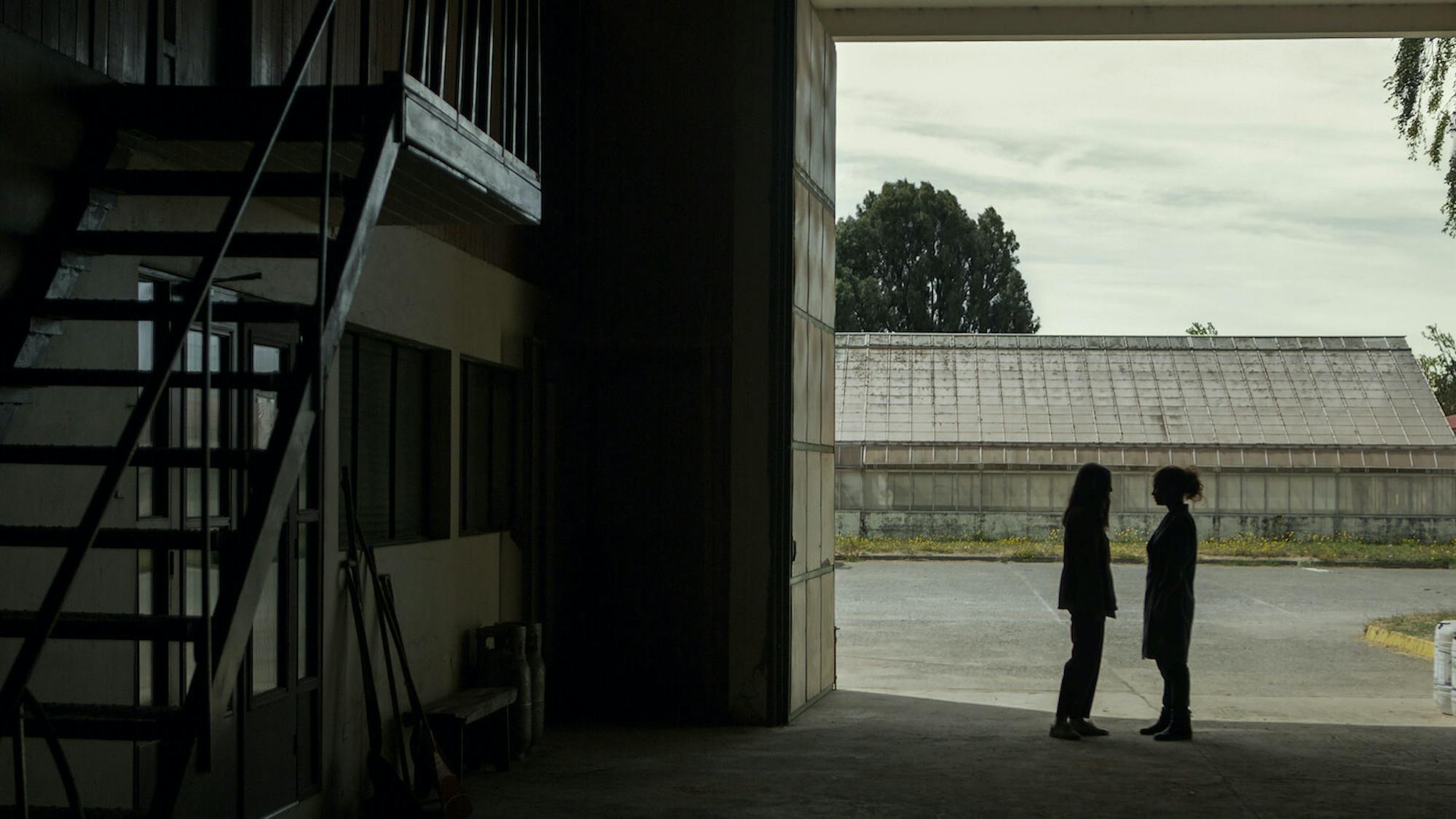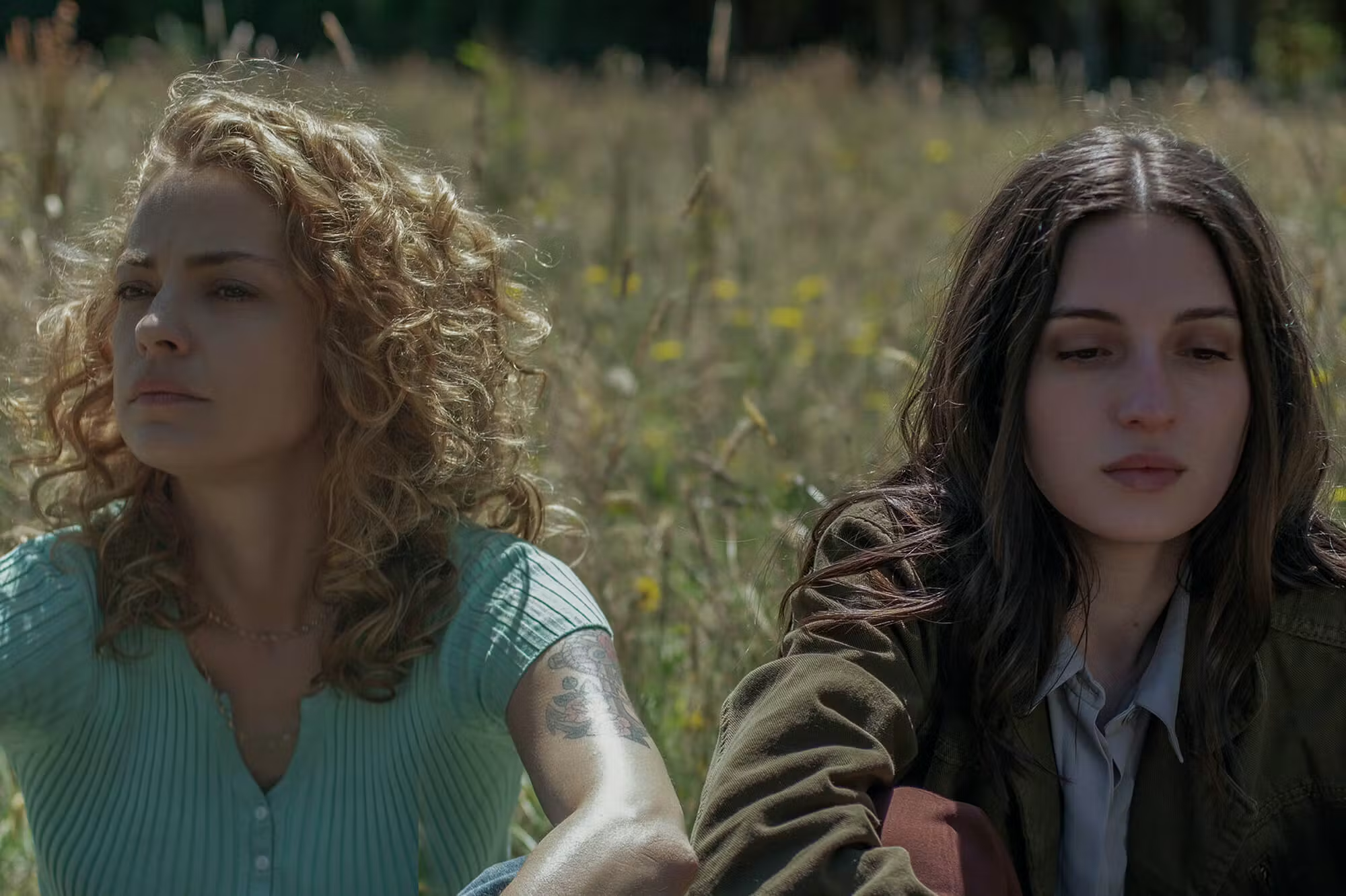Director Claudia Llosa and novelist Samanta Schweblin join journalist Katya Adaui in a conversation about motherhood.
In Fever Dream, the latest feature from acclaimed Peruvian director Claudia Llosa, two mothers and their respective children are entangled in an enigmatic drama that blurs the lines between reality and mysticism, between fear and unconditional love.
Amanda (María Valverde), a young Spanish woman, is visiting a rural town in Argentina with her daughter. Her husband has promised to join them in a few days. Intrigued by her unaffected sincerity, Amanda befriends Carola (Dolores Fonzi), a local woman with a few stories to tell. Distrustful of her only son David (Emilio Vodanovich), whose piercing gaze unnerves, Carola warns Amanda about the things she cannot see but still exist.
As their intimacy grows, a sensuous and unspecified bond develops between the two women. Through Carola, Amanda reconsiders the concept of “rescue distance,” which is how physically far a mother can be from her children and still have enough time to intercede when harm comes their way. Thematic undercurrents of unorthodox spirituality and environmentalism flow through Fever Dream for a layered sensorial voyage.
Llosa, whose sophomore feature The Milk of Sorrow became the first Peruvian film nominated for Best International Feature Film at the Academy Awards, continues her cinematic reexamination of motherhood with an otherworldly touch. Adapted from the book of the same title by award-winning Argentine novelist Samanta Schweblin, with the author’s involvement, the alluring film works with an unconventional structure and uses voiceover to place the viewer in a singular state of mind where subconscious and waking life intersect.
The conversation took place as part of the most recent Lima Film Festival and was moderated by journalist Katya Adaui. This version has been edited for clarity and length.

Nina (Guillermina Sorribes Liotta) and Amanda (María Valverde)
Katya Adaui: Claudia, I wanted to start by asking you, how did the desire to mother Fever Dream come about? And I use “mothering” precisely because of this sacred bond that exists between mothers and their children.
Claudia Llosa: Motherhood has always been one of the most sacred concepts in history. It is evident that women have changed in the last 50 years. But I don’t feel like the concept of motherhood is being redefined at the same speed. In some ways, the great transformation of social norms doesn’t occur if it doesn’t happen first in our symbols, and cinema is, for me, a very important space for the construction of the symbolic. That is why it has always been an obsession to analyze motherhood from different perspectives. Motherhood is challenging, not only because of what parenting entails, but also because of the various interpretations that it can have. When I read Fever Dream, it was a very powerful experience for me. Fever Dream crossed all of the themes that I had already worked on — in Madeinusa, The Milk of Sorrow, and Aloft — from a place that was very familiar and quotidian and at the same time very new. In Fever Dream what’s most directly connected with this idea is the concept that a mother always knows where her child is and calculates the distance and the time it would take her to get to them and avoid a tragedy. That feeling of fatality, that fear, and that danger are constant in the film — what threaten the rescue distance is that deep down is an invisible thread; it’s perhaps a metaphor for the umbilical cord.
That’s right, we discover that motherhood is a frail thread that’s always threatened. Samanta, how and when did the concept of rescue distance in your novel Fever Dream come to you?
Samanta Schweblin: It wasn’t there from the beginning. I was writing a story where fear, and the idea of danger that’s always near, but also intangible, were very present. I wanted this fear to be very close to the reader. It was present in all the layers of this story — it was in motherhood; it was in the characters’ relationships with each other and with the people they wanted to protect; and it was also in the environmental problem. It was already there, but it had no name. I don’t think I invented anything; rescue distance is something that we all deal with all the time, but suddenly I needed to name it in a concrete way, and I realized that, while it was something so specific, it had no name.
I wanted to ask Claudia if being a mother means living in fear.
CL: There’s no stronger fear than the fear of losing a child, and perhaps, from the perspective of children, the corresponding fear is that of losing their parents, especially when we are kids. It’s a natural fear. It’s a fear that we have to make part of us. We cannot overprotect our children. But there’s a fear that is very interesting for me, which is less politically correct, and that’s not talked about; it’s the fear of your own children when you do not recognize them, when they become strangers to you. There’s this idea of the first moment they put your baby in your arms, for example: In that moment the fear is narcissistic because the mother wants to recognize herself in her child, and sometimes she doesn’t see them as her own. And that’s when she turns the child into something sinister, and, at the same time, very interesting. It’s not only the fear of loss, which is somewhere we recognize ourselves very easily, but also Carola’s fear of not recognizing her own child, which is what gives depth to the concept of fear in motherhood.

David (Emilio Vodanovich) and Amanda (María Valverde)
The universe of the film is absolutely established in the feminine. The male characters are left out, and there’s an infatuation between Carola and Amanda. Samanta, how did you handle this mutual attraction that these women can’t fully understand?
SS: There is a great fascination between them, but there’s also repulsion at times. Each represents for the other an idea of happiness that cannot be had. Each represents everything that the other would like to be but cannot, not only on a personal level, but also in relation to their children. The dialogue that runs throughout the entire film is a dialogue between Amanda and Carola’s son. And although it is not so explicitly addressed, it’s also about the relationship between Carola and Amanda’s daughter. One of the great challenges was that it needed to be a story with a lot of attentiveness and tension, built from a place of absolute realism, but always anchored in Amanda’s gaze, in the idea of the stories that we tell ourselves, and the revisions of those stories. This relationship between the two of them is very strong. And, as you said, men in the film are absent. Even when they are physically present, they are absent in that they do not understand what is happening; they’re not reading the present. Even when the men are there, the women are the ones who are taking action.
Tell us about your experience of working with Claudia and how the collaboration came about. Did you want to turn the book into a movie?
SS: It was all a surprise. I had heard from four or five directors who made specific proposals to bring Fever Dream to the screen and I was very scared. With this book in particular, I felt that it was something too delicate, that it’d be too easy to transform it into something else. I was very attached to this book. But when Claudia wrote me a beautiful letter, I immediately said, “Yes, let’s get together.” We met for coffee and Claudia immediately started talking about the movie. I remember her telling me, “I have an idea.” She told me about a unique detail in how she would adapt it that would allow the novel to go from the literary plane to a visual one. It was something very small, but beautiful. That complex simplicity immediately showed me that she understood perfectly what parts could not be touched and what was most important to that story. This happened in the first ten minutes of the conversation, and I thought, “She’s going to be able to do it.” Working with Claudia on the screenplay, we reached places in the story that I had not reached with the novel. I even asked myself, “How did I miss this?” For me, it was not only that there was incredible care for the essential energy of the novel, but also that the story grew a lot. It was a beautiful learning experience.

Amanda (María Valverde) and Carola (Dolores Fonzi)
Claudia, can you tell us about decisions you and Samanta made about what was kept intact in the story?
CL: For me, the biggest surprise was when we had to expand some of the scenes between Carola and Amanda because the novel goes through this whole relationship in a fractured way. There were only three or four scenes that we had to expand, to deepen the concepts already explored in the novel from a cinematic perspective. But thanks to our luck, or our madness, we first started writing this as a series because I was obsessed with the thought that I could do it. That gave me permission to enter the novel from other angles. It allowed us to get to know each other creatively. Then, we organically went back to the essence of the novel, which is more like a story, more like a movie. This is the first adaptation I’ve done, and I also had a certain hesitancy. Creatively, it’s very important to have the option of opening other doors to know when to let lightning strike.
SS: For me, the use of voiceover was also a great challenge because the book is structured based on a dialogue between Amanda and David. And voiceover is something very risky in cinema. I was not as aware of this when I started working with Claudia. Voiceover can be very powerful, but it can also be tiring — the most essential information cannot be there. Still, we were both sure that it was an essential part of the story and that, even when the voiceover was not heard, it was necessary to build the idea that the voiceover was still happening. That was a very delicate job. We kept adjusting lines until the last day.
Claudia, your films have always been very personal. They follow women who are dealing with life or death conflicts. Tell us a little more about these journeys into the profound.
CL: It’s curious that you talk about a journey; that takes me back to Madeinusa — it takes me back to the beginning — because these stories reach such an intimate place in my being that sometimes it scares me. In retrospect, I can see in Madeinusa this idea of the absent mother, the liberation of the father in some way, and a bit of the search for the mother, and somehow, I was also moving away from the motherland. Later with The Milk of Sorrow, beyond all the other themes, there is nostalgia, trying to look back from memory. Then in Aloft, the protagonist is no longer a daughter — now she is a mother. That’s parallel to how I built my own identity through motherhood. Fever Dream came as a kind of breath of fresh air for me and allowed me to rethink all of these ideas but from a different perspective. I feel intertwined with all of my movies.
